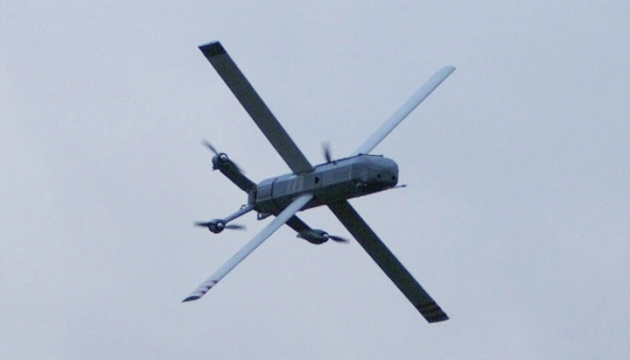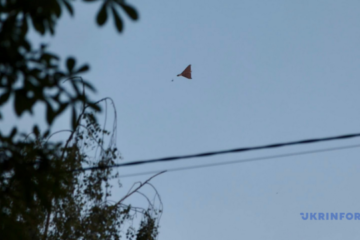The defense startup Helsing is reshaping the future of warfare with artificial intelligence – and Russia’s aggression against Ukraine has become a major catalyst.
The German defense company Helsing gained widespread attention in the fall of last year after media reports suggested it planned to supply Ukraine with 4,000 so-called “mini-Taurus” drones — AI-guided munitions purported to be miniature versions of the Taurus cruise missile. However, the term used by German newspaper Bild was misleading: Helsing’s drones are actually loitering munitions, or “kamikaze drones,” similar to the American Switchblade, and not scaled-down replicas of high-precision air-to-ground missiles.
Yet this media mix-up only fueled greater interest in Helsing — a European startup focused on artificial intelligence and defense software. In just four years, the company has raised EUR 1.3 billion in funding and reached an estimated valuation of EUR 5 billion, establishing itself as a leading innovator in Europe’s defense industry.
Recently, a media day was held at Helsing’s headquarters in Munich. Among the participants was an Ukrinform correspondent, who had the opportunity to explore the company’s operations and its cooperation with Ukraine — a country whose defensive war has played a crucial role in shaping this high-tech startup.
“PROTECTING OUR DEMOCRACIES” – THE HELSING PHILOSOPHY
The company’s motto, “Protecting our democracies,” immediately sets it apart from traditional arms manufacturers. According to one of Helsing’s three co-founders, Gundbert Scherf, the company was born out of a strong belief in the growing threat to European democracies.
“What continues to deeply motivate us — and helped attract amazing talent — is the conviction that Europe’s democracies are under attack. We believed this already in 2020 when we first met, and in 2021 when we founded the company,” Scherf said.
Previously a partner at McKinsey in charge of aerospace and defense, Scherf also served as a special representative at the German Ministry of Defense during the tenure of current European Commission President Ursula von der Leyen.
Scherf sees the European discourse on AI and autonomous systems as overly cautious — always framed around “risks and dangers” and marked by restraint. But such restraint, without the ability to act, is “nothing more than weakness,” he argues. In today’s security landscape, “Europe must learn to stand on its own.”
The key to this, he says, is asymmetry.
“Aggressors usually rely on mass — unfortunately, we are seeing this now in Ukraine. But with technological advances, asymmetry — the ability to implement solutions that deliver 10 or 100 times more impact than the resources used — is becoming ever more relevant,” Scherf added.

At the core of Helsing’s model are artificial intelligence, autonomy, and scalability. The company champions the concept of software-defined defense, where the focus shifts from hardware to AI and software capabilities.
“We’ve all seen how hard it has been over the past three years for Europe to scale up the production of conventional weapons. It’s not for lack of effort — manufacturers are working two or three shifts — but physical components are complex and difficult to scale. If we pivot toward software and simplify the hardware, we get a powerful combination we call ‘autonomous mass.’ We believe this will dramatically enhance our capabilities,” says Scherf.
To realize this vision, Helsing has assembled a top-tier AI team, recruiting talent from leading U.S. tech companies. Its Chief Scientist, Antoine Bordes, previously headed Meta’s FAIR lab for foundational AI research. Chief Operating Officer Sam Rogerson and Chief Technology Officer Robert Fink both came from Palantir Technologies, known for its big data analytics software.
Over time — and especially under the influence of the war in Ukraine — Helsing concluded that software alone wasn’t enough.
“Users demanded these capabilities faster than we could integrate them with existing systems. AI and software development progressed much quicker than expected. And while integration into legacy systems was possible, it couldn’t happen at the speed we considered necessary. That’s why building our own hardware became a key part of our strategy,” Scherf said.
This year, Helsing opened its first drone manufacturing plant in southern Germany — a so-called “resilience factory.” In July, a new facility for producing underwater gliders launched in the United Kingdom. The company also acquired Grob Aircraft, a German manufacturer of light aircraft and gliders.
Another defining aspect of Helsing is its commitment to self-financing R&D, without waiting for government contracts. The founders believe that defense should adopt the same approach as the pharmaceutical industry — where companies take risks and are rewarded with breakthrough results.
“During the pandemic, this is exactly what made the difference: had everyone waited for state contracts before beginning vaccine research, we’d still be wearing masks. But some companies acted on their own initiative. And I believe that’s the direction we must move in,” Scherf concluded.
CENTAUR IN THE SKY: HOW HELSING IS TEACHING ARTIFICIAL INTELLIGENCE TO FIGHT AIR WARS
Helsing demonstrates an ambitious and systematic approach to integrating artificial intelligence into the defense sector. One of the most striking examples is its work in the aerial domain, where the company has successfully embedded AI into combat aircraft — both at the system-wide level and within subsystems.
In collaboration with Sweden’s Saab, Helsing developed an AI agent named Centaur — an autonomous program capable of piloting a Gripen E fighter jet in combat conditions. During test flights over the Baltic Sea about six weeks ago, Centaur demonstrated its ability to independently carry out a beyond-visual-range (BVR) combat mission. Once the pilot in the cockpit activated Centaur mode, they no longer intervened — the AI made all decisions regarding maneuvering and target engagement in real time, based on sensor data.
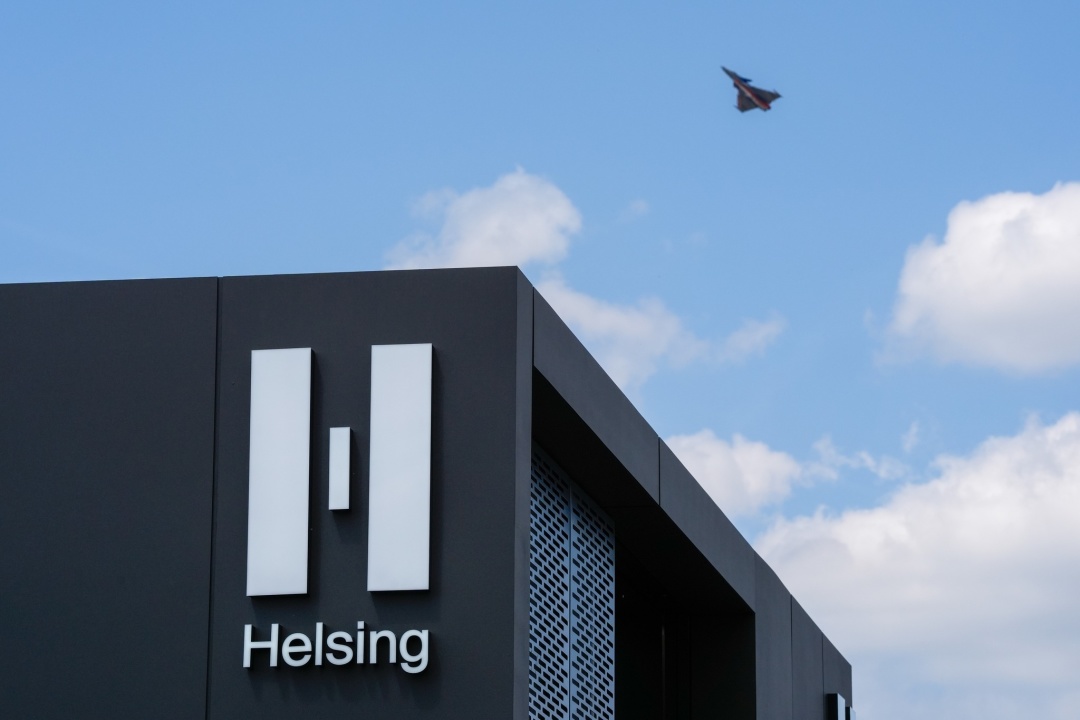
A second Gripen, piloted by a human, acted as the adversary, allowing Centaur’s performance to be tested in conditions as close as possible to actual combat.
During a media day in Munich, journalists had the opportunity to see Centaur in action in a simulated BVR engagement. Two experienced pilots (veterans of the F-16, MiG-29, and Eurofighter) went head-to-head against the AI in flight simulators.
“Unlike Hollywood movies, in real air combat, you don’t actually see the enemy. Engagements happen at distances of up to 100 km, guided only by radar and electronic warning systems. It’s like playing chess in the cockpit, where you can only see part of the board and don’t know exactly when a missile has locked onto you,” Helsing explained.
During the simulation, journalists could observe the battle from a “god’s-eye view,” watching the movements of four fighter jets on screen: a pair of “blue” aircraft (Centaur-controlled) and a pair of “red” aircraft (human pilots). They continuously maneuvered, closing in and pulling away, trying to outwit and strike their opponents.
While the results of the Baltic Sea trials remain classified, the outcome of the Munich simulation was revealing. After about ten minutes of combat, the human “red” team had fired all six of their missiles, without hitting a single target. Meanwhile, the AI-controlled “blue” team still had munitions remaining and had forced the opponents to retreat.
The human pilots employed standard NATO tactics they had used throughout their careers. In contrast, the AI relied on its own dynamic strategy, one that is constantly evolving. Its training process resembles how computers learn to play chess.
“Centaur trains by competing against copies of itself. When one agent finds a more effective maneuver or tactic — say, accelerating at the right moment to gain an edge — that decision is copied and becomes the new baseline. Training continues at a new level. It’s a process of continuous self-improvement,” Helsing explains.
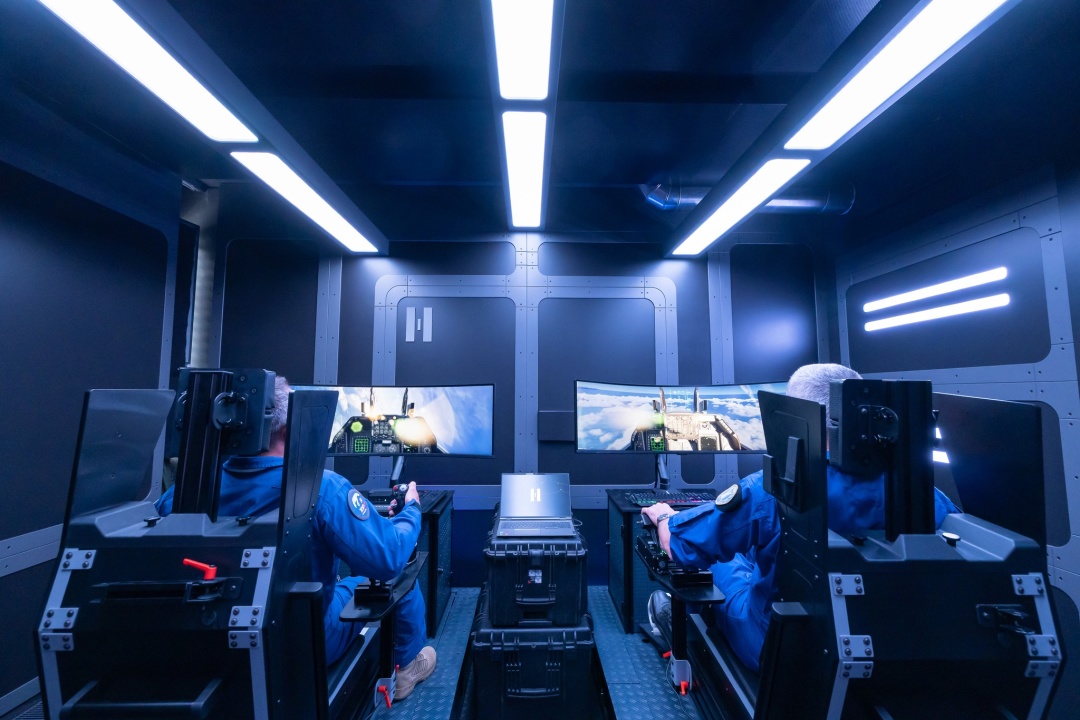
Training takes place on a simulator that runs faster than real time and supports parallel simulations. In just 72 hours of real time, Centaur can accumulate experience equivalent to one million flight hours — a scale of training that is unattainable for even the most seasoned military pilots.
“Training one human pilot takes years and costs millions. Now, we have an AI pilot capable of operating at a human level. This radically changes how combat airpower is built. And this AI can be scaled — integrated into hundreds or even thousands of unmanned aircraft. Rapid growth in airpower is now a matter of software, not time or human resources,” says Stephanie Lingemann, Senior Director Air Domain at Helsing.
Another innovation in Helsing’s aerial toolkit is Cirra, an AI-powered electronic warfare system. Its role is to create a precise tactical picture even in the presence of unknown radio emissions. Cirra uses machine learning to process signals in real time. The system is currently being integrated into the Eurofighter’s onboard electronics.
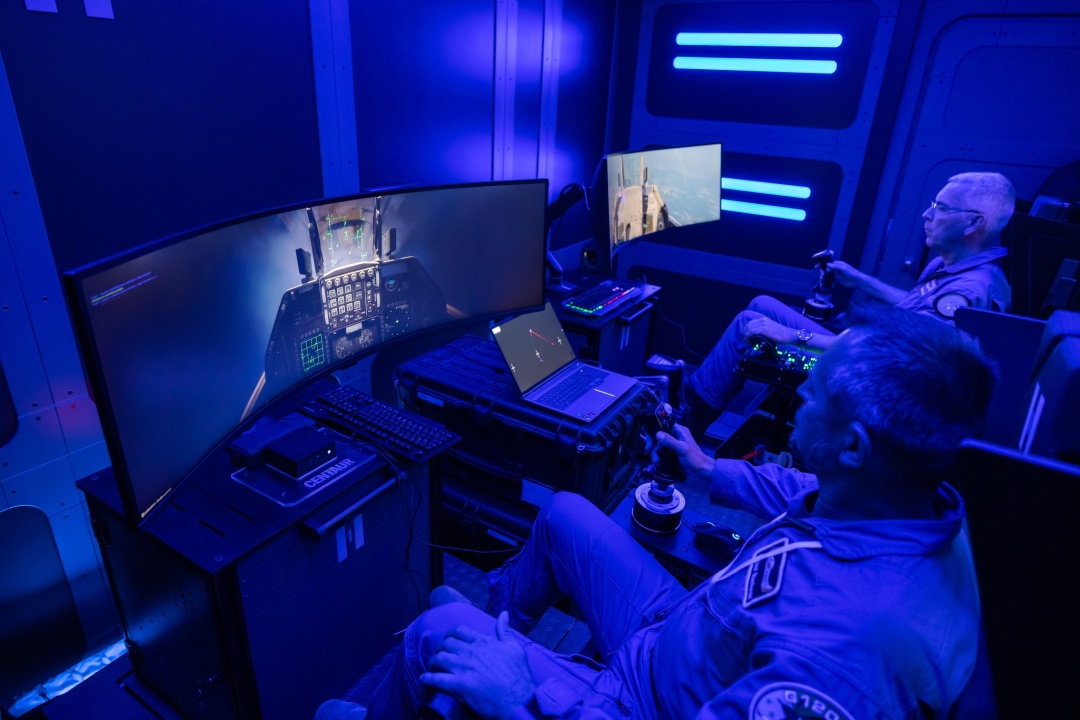
“DIGITIZING THE OCEAN”: HELSING REINVENTS UNDERWATER WARFARE WITH AI
At Helsing, there is a firm belief that artificial intelligence can be just as transformative beneath the waves as it is in the air, especially when it comes to defending Europe’s maritime infrastructure, a need that has grown urgent after recent incidents involving damaged undersea fiber-optic cables in the Baltic Sea.
Traditionally, underwater surveillance relies on acoustics — humans literally listening to sounds beneath the surface. But with advancing technology, submarines have become quieter, maritime threats more complex, and detecting the proverbial “needle in a haystack” increasingly difficult.
“The volume of information a sonar operator receives today is incomparably larger than when we first went to sea,” said Amelia Gould, General Manager Maritime at Helsing. “The environment has changed dramatically. Sensors are more sensitive, but the sea is quieter, and background noise has become deafening. It’s hard to hear anything.”
This challenge has called for a radical shift in approach — one based on scale, autonomy, and artificial intelligence.
“Imagine what we’re aiming for: a constellation of sensors operating silently across the oceans, continuously collecting and transmitting near-real-time data about what they hear,” says Gould. “And imagine that this network adapts dynamically to changes in threat patterns, geography, or operational context. Imagine detecting the enemy before they even hear us. Making decisions based on that information — anywhere in the world — at scale and at a fraction of the cost of today’s submarine fleets. NATO calls this the ‘digitization of the ocean’.”
At the heart of this strategy is Lura, a software platform described as the first of its kind: a large acoustic model built on the logic of large language models, but trained exclusively on underwater sounds — terabytes of acoustic data, not human speech.
“We didn’t repurpose dual-use models trained on voice. We built Lura from scratch, training the AI to understand what underwater sound is and how it behaves,” a Helsing representative said.
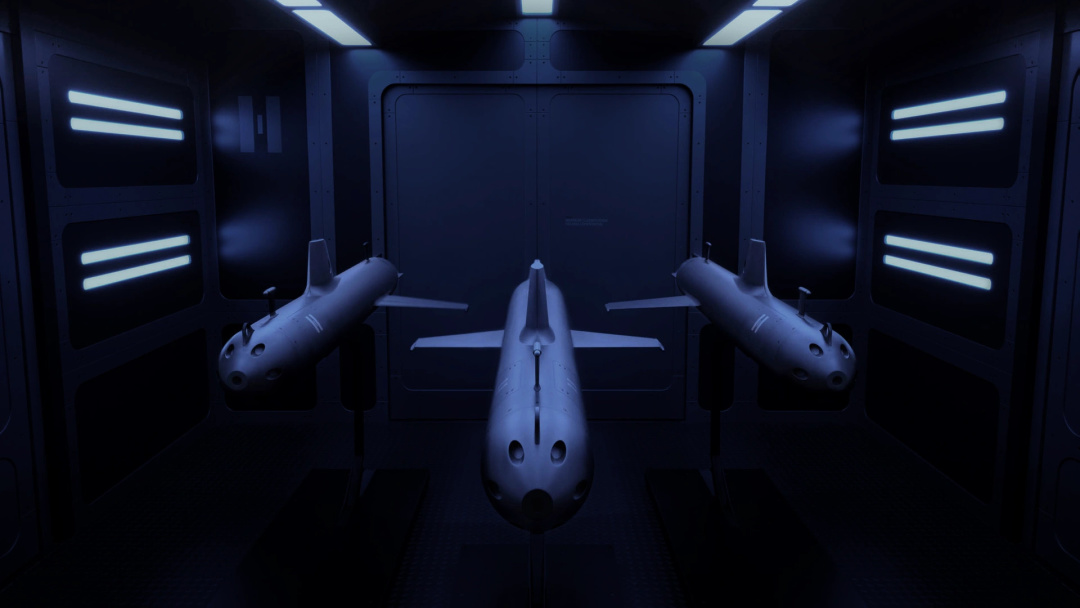
According to its specifications, Lura can now detect underwater signals amid background noise, classify sound sources, and even identify specific vessel types. It can localize their position and track movements over time.
This is not just an upgrade to traditional sonar — it is a paradigm shift. Lura can detect targets too quiet for human ears, operates 40 times faster than experienced sonar operators, simultaneously analyzes all frequencies and directions, and needs significantly less data to make accurate decisions. Most notably, it can recognize individual vessels by their unique acoustic fingerprint.
“Lura can say with 90% confidence: I’ve heard this before. I recognize this frequency profile, this shaft rotation rate — this is that ship,” says Gould.
But even the most powerful AI model is useless without a platform that enables it to “hear.” Helsing’s answer? Underwater gliders.
These buoyancy-driven vehicles (without motors or propellers) have long been used in the civilian sector — for environmental monitoring, seismic research, whale tracking, and even weather modeling. Helsing’s custom-built SG-1 Fathom glider — about two meters long and shaped like a mini-submarine — has already passed sea trials in Plymouth, UK. Outfitted with the Lura model and an advanced sensor suite, it is part of Helsing’s broader shift toward scalable, autonomous maritime surveillance.
A glider production facility also began construction in Plymouth in July. Several European navies have already shown interest in the technology.
“We’re discussing the deployment of hundreds or even thousands of gliders — with navies across Europe — to cover seas, shipping lanes, port entrances, and critical seabed infrastructure,” says a Helsing representative. “Essentially, it’s an anti-submarine detection barrier.”
Having such a barrier in the Black Sea would be of great value to Ukraine, enabling early detection of both surface and submarine threats from Russia — and ideally, striking them immediately.
With that in mind, an Ukrinform reporter asked Gould whether the SG-1 Fathom could be used to attack a target directly after detection. Her answer was short: “No.” The glider has no propulsion and cannot pursue targets. Its role is strictly to find the needle — strikes must be carried out by other platforms.
“Think of the glider as one club in a golf bag,” Gould explains. “Detection is passed from one tool to another. You don’t play an entire game with just one club. Right now, a lot of people try to build a Swiss Army knife — one platform that does everything. That’s why submarines are so massive and complex: they try to be all things at once. Our approach is different: modular and specialized — one tool for wide-area detection, another for tracking, a third for striking. And Lura is the thread that ties them all together.”
Helsing also acknowledges the significant progress Ukraine has made in developing its own “golf clubs,” often outpacing European manufacturers — particularly in naval drones, both surface and subsurface.
“I’ve said this many times before skeptical European audiences,” adds Gundbert Scherf, co-founder of Helsing. “People say: Well, that’s just Ukraine. We don’t need to do that — we have other capabilities. But look at what Ukraine has achieved — crippling half of the Russian Black Sea Fleet without having a navy of its own. That’s no longer something you can dismiss or downplay.”
UKRAINE AS A DRIVING FORCE: THE WAR SHIFTED HELSING’S FOCUS
According to Niklas Köhler, co-founder of Helsing and an expert in machine learning and artificial intelligence, today’s defense solutions architecture is shaped by two main technological vectors: network-centric integration and autonomous platforms. In the early days of the defense startup, the focus was primarily on integrating software to improve the performance of existing systems — artillery, helicopters, and other weaponry. However, the war in Ukraine revealed that speed and scalability of weapons production are critically important. Drones, in particular, proved to be the most scalable solution.

“The war in Ukraine fundamentally changed our approach. Unmanned and autonomous systems became a key area of focus — not just in theoretical scenarios, but in real-world conditions where lives are on the line. This is no longer a test range where you can safely integrate systems. It’s a war where people are launching drones from the front lines,” Köhler said. “At first, mostly commercial drones were used, but militarization gradually followed: both small and large UAVs emerged — on land, in the air, and at sea. Those closely following the industry have witnessed this explosion of innovation.”
He noted that there is now strong demand for small autonomous systems that can be rapidly scaled and deployed en masse, offering a substantial advantage over traditional platforms that often take years to manufacture.
“And Helsing chose to follow this path. As a company entirely focused on the defense sector, we must meet the demands and needs of our users,” Köhler said.
His colleague, Scherf, added that Ukraine is a key partner for the company, and its defensive war against Russian aggression has become a “defining factor” in Helsing’s shifting priorities and development path.
“When the full-scale war in Ukraine began, our company was not even a year old. That means we’ve spent three-quarters of our journey evolving under the influence of the events in Ukraine,” Scherf told an Ukrinform correspondent when discussing cooperation with Ukraine.
At the start of Russia’s full-scale invasion, Helsing simply wanted to be helpful wherever it believed it could be most effective. In response to a request from the Ukrainian side, they joined the development of a system for automated processing of large volumes of satellite radar imagery using artificial intelligence. Helsing succeeded in helping to “automate part of that process,” which became the first step toward a deeper understanding of the practical needs of wartime operations.
This experience brought the company to a new level. Around one-and-a-half years ago, Helsing began exploring how its technologies could be adapted to improve artillery accuracy and fire correction. However, their Ukrainian partners sent a clear message: the top priority was medium-range strike drones capable of operating at distances of 40 to 100 kilometers — beyond the reach of conventional artillery and resilient to intense enemy electronic warfare.
This, in turn, sparked a new direction for the company: the development of drones with built-in AI algorithms.
HELSING’S “SMART” DRONES: FROM COOPERATION WITH UKRAINIAN MANUFACTURERS TO THEIR OWN STRIKE DRONE, THE HX-2
At first, the startup focused on close cooperation with the Ukrainian drone manufacturer Terminal Autonomy, integrating its software into an existing platform — a flying wing-type drone. The result was a new product, the HF-1, the same pseudo-mini “Taurus” mentioned earlier.
According to Simon Brünjes, Helsing’s representative responsible for drone operations and activities in Ukraine, 1,950 units of the HF-1 have already been delivered to Ukraine — nearly half of the 4,000 drones contracted. These drones are in service with several Ukrainian units and have been successfully used in combat conditions.
“The system has this capability: once it locks onto a target, it stays on it — despite all the enemy’s electronic warfare countermeasures,” Brünjes said, describing how the AI-powered drone operates.
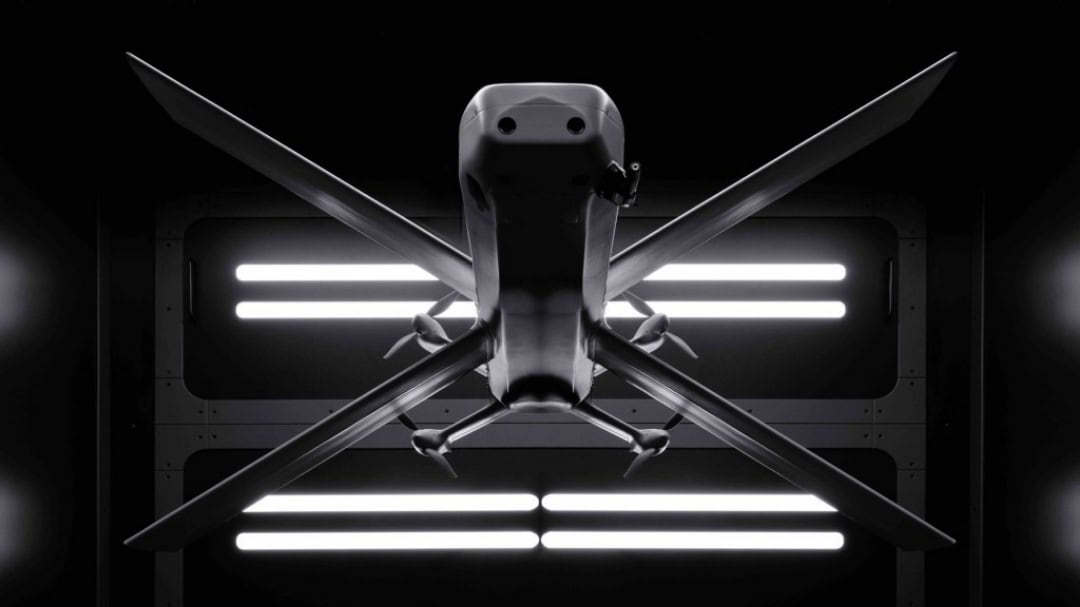
The same software was later implemented in the HX-2 — a strike drone with a distinctive double X-shaped wing design, which is entirely developed and produced by Helsing. This is the drone the company is now prioritizing, having opened a “resilience factory” in Germany. The facility currently produces over 450 HX-2 drones per month, with the capacity to ramp up production to 1,000 units.
Brünjes notes that the HX-2 weighs 12 kilograms, including a four-kilogram payload. It has a range of up to 120 kilometers, a cruising speed of 80-90 km/h, and a top speed of up to 250 km/h.
These impressive hardware specs are enhanced by advanced software features. Thanks to a new GPS system for night flights, the drone uses a downward-facing camera that matches live terrain images to a digital map, allowing it to navigate by recognizing landscape features.
“It’s like having a map while you’re looking at nature. There’s a mountain, then another — you see them on your map, triangulate, and pinpoint your position. We do that with data throughput in the hundreds of terabits per second. That’s why our system is so accurate,” Brünjes says.
Another new feature is a target re-identification (re-ID) system, which combines logical and visual data — time, direction of movement, coordinates, and descriptive features — allowing the drone to reacquire the same target with 99.9% accuracy. However, the final strike decision is always made by a human operator.
A key innovation is the autonomous swarm concept. Helsing’s modular software platform, Altra, enables dozens of HX drones to operate as a coordinated swarm under the control of a single operator.
On Helsing’s website, the HX-2 is advertised as a “new type of strike drone” immune to enemy electronic warfare (EW). Of course, that is not entirely true: the drone does not have complete immunity to modern Russian EW systems. Brünjes acknowledges this when asked by Ukrinform whether the drone would be lost if the operator loses contact with it. He explains that on the Ukrainian front, there are zones where GPS or radio signals are jammed or completely lost, but the HX-2 is not lost — it returns to the last point of contact, allowing the operator to reassess the situation, shift the mission, or choose a new target.
But could an AI-powered drone, if signal is lost, independently continue its mission, locate, and strike the target?
“Technically, yes. But we are not implementing that feature for Ukrainian forces at this time. The reason is that, as I mentioned, we are operating on Ukrainian territory. There is a fine moral line we’re careful to observe. We want the system to remain under human control, even though we have the technical capability to take a different approach,” Brünjes says.
That being said, autonomous targeting during the final stage — after the target has been identified, locked, and authorized for strike by the operator — is already in use. In such cases, even if contact is lost near the target due to EW interference, the drone can still carry out the strike. This is a major advantage, especially for hitting high-value targets beyond artillery range.
In February, Helsing announced plans to supply 6,000 HX-2 drones to Ukraine, shortly after completing development of their “smart” kamikaze drones.
“Just a little more patience,” Brünjes says in response to the question of why no HX-2 footage has yet appeared on Telegram.
According to him, “internal testing” of the HX-2 is nearing completion in Ukraine, in close coordination with a Ukrainian military unit. The drone is being adapted to the realities of the Ukrainian front.
Helsing notes that changes in the electromagnetic spectrum in Ukraine occur at an incredible pace, and the company is trying to adapt rapidly.
“We’re delivering not just a product, but an entire system. That includes training, service, and support. Thanks to our current presence in Ukraine, we can respond to changes on the battlefield, which occur about every two weeks,” Brünjes explains. “The electromagnetic spectrum in Ukraine shifts at a speed that’s hard to imagine here in Germany. That’s why it’s not enough to just deliver a system. You have to be part of the process, close to the user, and able to respond to real-time developments.”
He adds that this approach also allows them to respond quickly to critical feedback — “even a person who was quite critical in February is now very positive about our work and our system.”
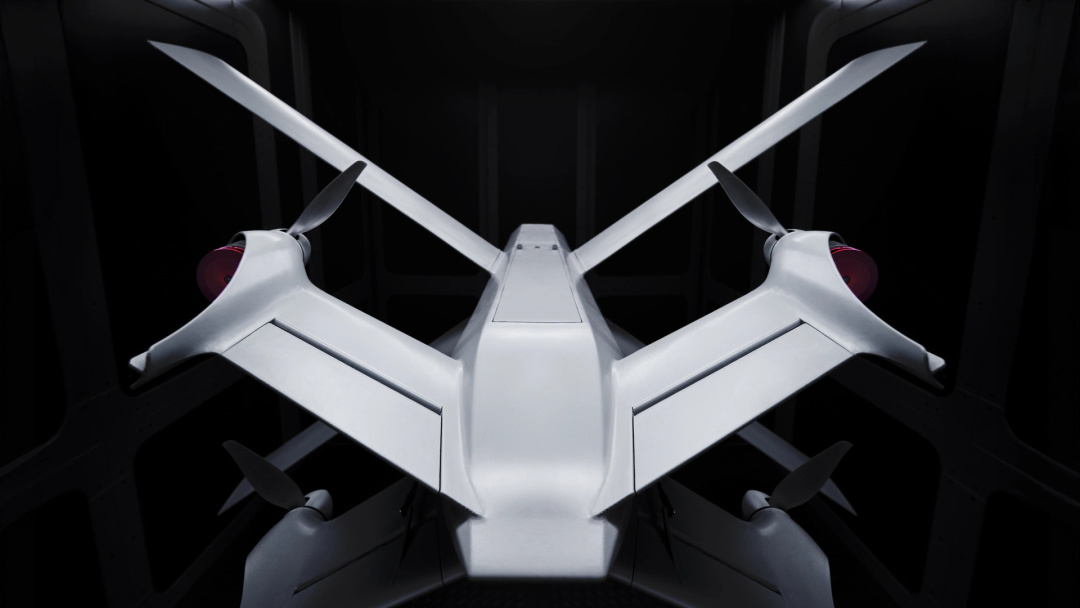
As for the cost of Helsing’s drones — an issue that has been raised in the media with allegations of inflated pricing — the company does not disclose exact figures, but asserts that the HX-2 is cheaper than the Russian kamikaze drone of the same class, the Lancet.
PUTIN PRODUCES 1,500 TANKS A YEAR — AND MAY NOT INTEND TO USE THEM IN UKRAINE
In addition to the aforementioned developments, Helsing is also active in aerospace technologies, automated battlefield analysis from multiple data sources, and the design of new models of human-machine interaction in combat — all built around artificial intelligence. This new-generation defense startup is not hiding its ambitions: according to one of the co-founders, Torsten Reil, their goal is to bring together the best European talent from around the world and build a European powerhouse that truly makes an impact — and becomes a global leader.
“This might sound overconfident, but we want to help Europe ‘get its backbone back’,” Reil said during a media day in Munich. “We want to prove that it’s possible to build a leading company in this sector — and at the same time, make a significant geopolitical contribution.”
Helsing has a clear understanding of the most pressing threat to the continent’s security today.
“We know that Putin annually refurbishes or builds around 1,500 tanks. We know that most of them are being stored. And I believe we have to assume that he intends to use them at some point — and probably not in Ukraine,” Reil stated. “That’s why I think NATO’s eastern flank is something we need to pay very close attention to.”
In Helsing’s development strategy, Ukraine holds a special place.
“We believe we have a long-term commitment to Ukraine. This is not a one-off demonstration project after which we move on to something else. Ukraine is part of our company. It’s at its core,” his colleague, Scherf, said.
The company is convinced that Ukraine is a technological driver, and the Ukrainian frontline is a “laboratory” where innovations directly contribute to the defense of democracies. What is at stake is not just the success of one startup, but the security of an entire continent. And perhaps, right now — under missile fire, in trenches, at command posts — the new architecture of European security is already being shaped.
Vasyl Korotkyi, Munich
Photos provided by Helsing
Source: Combat AI from Europe

